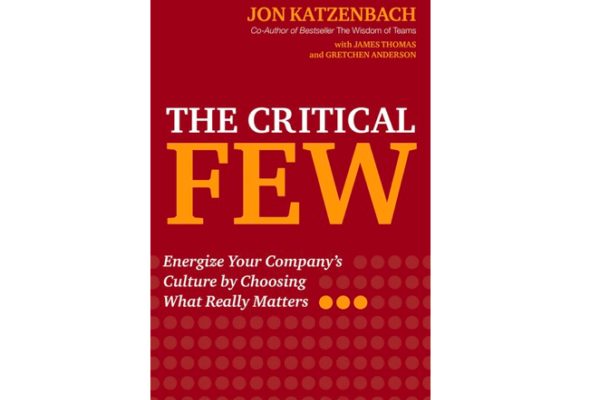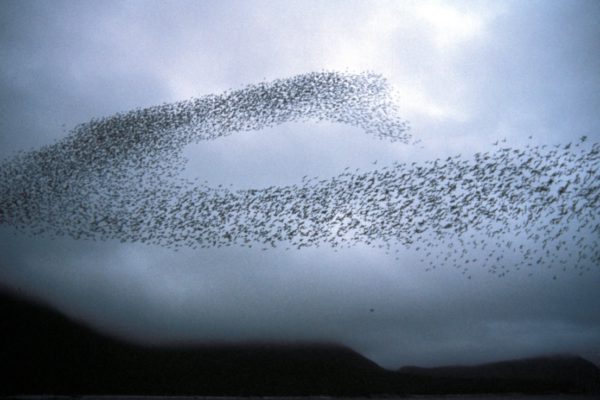
Two posts ago, I shared my thoughts on Adam Grant’s book Originals. As part of Adam’s listening tour to develop his thinking, he visited our office in New York for a conversation about cultures that are both cohesive and that foster divergent thinking and constructive dissent. In preparing for the dialogue with Adam, I wrote down my thoughts on the topic, which I’ve shared here with small modifications to make the piece clearer and more readable.
Institutions need both alignment and divergence. Four forms of divergence stand out as essential:
- Confronting Mistakes and Failures. Failures and mistakes that are anchored high in an organization, that cross the organizational boundaries, or that have their causes deep in the way large numbers of people are operating require divergence to be seen clearly and addressed in any decisive way.
- New Solutions to Known Priorities. Institutions operate by creating a preferred path to delivering solutions to known problems. Sometimes this path is routine (“operations”) and sometimes this path takes us through a hypothesis to an as-yet uncharted course of action. In either case, there may well be other solutions of a very different kind that require divergence from the current path. For instance, a rapid prototyping approach might turn out to better deliver against the known priority to develop offerings that fit a consumer need than a current approach grounded in intensive up-front consumer research.
- Parallel Efforts to Achieve Distinct Aims. F. Scott Fitzgerald wrote that the test of a first-rate intelligence is “the ability to hold two opposed ideas in the mind at the same time, and still retain the ability to function.” An analogous concept applies to institutions. Achieving sustained and effective focus on both a mature business and an emerging disruption, on both an organic growth path and a transformational acquisition, on both a dominant channel and a new channel with conflicting needs and dynamics are all challenges that take this form. There is a strong tendency for one prong to sufficiently undermine the other that the right actions become hard to do, and perhaps even so much so that the right thoughts become hard to think.
- Reframing Strategy. Perhaps the deepest and most difficult form of productive divergence is the reconceptualization of an institution as a whole. Sometimes these shifts are at the level of an institution’s fundamental mission or commitments (e.g., Intel’s abandonment of its core memory chip market), sometimes at the level of the core concepts defining “where to play and how to win” (e.g., Jack Welch’s #1 or #2), and sometimes at the level of reconceiving the external environment (e.g., Shell’s early work on scenarios). Insights of these kinds imply pervasive changes in an institution’s focus and its DNA – the divergent thought needs to reshape the core.
Each of these dimensions represents a form of adaptability: adapting, respectively, to poor fit between visualized and actual execution; between a vector of problem solving and what will actually solve that problem; to an environment in which no single path is sufficiently likely to achieve strategic objectives; and to an institution whose fundamental conception of its strategy and role doesn’t address the challenges before it. An institution that excels at all four of these forms of adaptation is powerfully agile, likely to metabolize whatever conditions or events it encounters in ways that strengthen its ability to compete and flourish.
Mastering these forms of divergence hinges on culture.
Culture is the fabric of shared patterns of action, thought and feeling that impact collective performance. It’s the grain of how a company’s people perceive their world, pay attention to some things and not others, engage customers, spend money, treat one another.
Each of the four forms of essential divergence depends deeply on culture. Take the question of new solutions to known priorities, for instance. Culture shapes whether people connect across disciplines, whether information is broadly shared enough that the right people see problems in their peripheral vision to which they might have divergent solutions, to what degree promising alternatives get nurtured and funded, and so on. Close studies of institutional failures such as the 9/11 Commission’s report, the Columbia Accident Investigation Board’s inquiry, or the New York Times’ self examination following the Raines newsroom debacle consistently bring to light the depth of the patterns that pulled away from clear recognition of problems and concerted accountability to address them. (See Jena McGregor’s wonderful piece Gospels of Failure in Fast Company – a piece we’d talked about a great deal as she developed it – for an investigation of this topic.)
Culture is often at the root of pathologies related to insufficient divergence – which isn’t to say that organizational design, management systems and other factors, themselves intertwined with culture, aren’t also tangled in those roots. These pathologies have different natures: the divide between technical and management cultures at NASA is a distinct kind of problem from the internal rivalries within the intelligence community described in the 9/11 Commission’s report.
If there are many kinds of pathology, is there a single archetype of cultural health that fosters and enables the right divergence, against which institutions of different kinds might measure themselves? I don’t know that there’s a clear reason to believe there is (that “all happy families are alike”), but would suggest the following working list of attributes as highly associated with productive divergence of the four types across a range of institutions:
- Purpose-Driven. When there is a clear “why” and a hierarchy of what’s valued, that creates a frame of reference from which to reach a shared understanding of the importance of divergent ideas.
- Balanced Focus on Process and Outcomes. While too little focus on outcomes creates institutions that are rote, lazy or distractable, too narrow a focus on present outcomes without attention to the quality of the system producing those outcomes makes institutions brittle. Often the most important divergence relates to units or processes that are more or less producing the right outcomes right now, at least on the most measurable dimensions, but that are vulnerable, risky or producing negative externalities. A significant degree of focus on the underlying system or process by which outcomes are achieved opens up space for divergent inquiry.
- Broadly Distributed Sense of Agency. For productive divergence to flourish, people far enough down in a hierarchy need not only to feel enough sense of agency to express their ideas, but must feel the greater level of agency required to build a coalition to enable their ideas to be understood, tested, moved toward action. In Dov Seidman’s vocabulary, institutions that exhibit self-governance as a dominant paradigm—rather than informed acquiescence—are far better equipped to nurture productive divergence.
- Diverse Talent Pools. More diverse disciplinary backgrounds, ways of thinking, life experiences and the like create a richer ecosystem for usefully divergent strands of thinking to emerge. In order for this to occur, there generally needs to be significant mixing of unlike people, interacting deeply enough for integration of ideas to occur.
- Organizational Slack. Striving to operate at peak efficiency necessarily means relentlessly applying the current best thinking, versus engaging in a messy, inefficient search for new thinking. Peak efficiency absorbs an organization’s full time, energy and intellectual bandwidth. Productive divergence requires a certain amount of open, even wasted time and space. As the poet Marianne Moore wrote, “there is no genius without a great deal of idleness.”
- Neither “Nice” nor “Mean.” Organizations that are “nice” in the sense of avoiding conflict and confrontation suppress divergent thinking to avoid discomfort. In organizations that are “mean” in the sense of players actively seeking to disrupt others’ agendas in order to gain relative standing and scarce resources, it will generally be all too easy for the stronger forces represented by established ideas to overcome the weaker forces likely to be marshaled behind divergent ideas.
Organizations that have clear, consciously chosen, distinctive ways of thinking and operating are on the whole much better at diverging well—this shared backdrop creates the context in which divergence emerges and gets attended to. At the same time, this clarity can easily shade into orthodoxy, rigidity, even magical thinking. Fostering productive divergence, like productive divergence itself, is irreducibly a matter of judgment – not a mystical art, but an art against the backdrop of a science.



